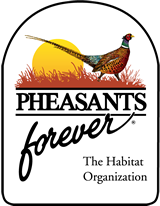Marina Osier| Farm Bill Range Conservationist, Pheasants Forever/USDA NRCS | Lamar, CO
Summer in Lesser-prairie chicken (LPC) country involves many long days of vegetation monitoring on active Lesser-Prairie Chicken Initiative (LPCI) contracts. The monitoring protocol is designed to collect data to determine how the prescribed management implemented over the 5-10 year contract term is affecting the plant communities, specific to the habitat requirements of LPCs. Though sometimes a tedious task, annual vegetation monitoring provides a multitude of opportunities in terms of knowledge and out-reach. Opportunities to see and experience much of chicken country, to continue to interact with landowners and work with them to prescribe adaptive management, and to observe potential for future habitat projects for other wildlife.
Summer fieldwork also provides an anecdotal comparison between average, above average, and well below average precipitation years. For most of southeast Colorado, an area where average rainfall maxes out around 15 inches, the 2017 field season was what many locals consider a phenomenal year for moisture. With 2017 annual precipitation up to almost 30 inches in some areas, the grasses and forbs grew like few producers in the area had ever seen in their lifetimes.
However, the relief from the drought was short-lived, and the rains shut off at the end of the 2017 summer. With very little winter snow following, leading to below average snowpack in the mountains and moisture on the plains, southeast Colorado slid right back into the drought that haunts so much of the West. The 2018 season was plagued by a combination of very little precipitation and temperatures soaring well past 100 degrees since early spring. These conditions caused a very short “green up” which lasted just a couple weeks. Grass growth and sand sagebrush lagged behind, and the few forbs that showed up wilted quickly, leaving little evidence of their presence.
Though drought often spells trouble for wildlife, the birds are still singing, quail are still calling, and lesser-prairie chickens are still booming. Due, in part, to the adaptive management strategies employed by the producers and natural resource professionals, the fluctuations in precipitation can be absorbed by the resiliency of the wildlife that lives in this dynamic area. And with any luck, the 2019 season will bring a healthy balance of rainfall back to the plains.








 We are a nonprofit conservation organization dedicated to the protection and enhancement of pheasants and other upland bird populations in North America. Pheasants Forever is the only national organization with a model of chapters keeping 100% of the funds they raise. While belonging to a larger national organization that has a voice on federal and state conservation policies, chapters are tasked with finding projects for their funds. Colorado takes full advantage of this model using funds raised for projects locally as well as other areas in the state of Colorado.
We are a nonprofit conservation organization dedicated to the protection and enhancement of pheasants and other upland bird populations in North America. Pheasants Forever is the only national organization with a model of chapters keeping 100% of the funds they raise. While belonging to a larger national organization that has a voice on federal and state conservation policies, chapters are tasked with finding projects for their funds. Colorado takes full advantage of this model using funds raised for projects locally as well as other areas in the state of Colorado. Here are some events we are hosting or partnering this year (dates subject to change):
Here are some events we are hosting or partnering this year (dates subject to change):

 Pheasants Forever has been recognized with its fifth consecutive 4-star rating from Charity Navigator – the nation’s largest charity evaluator – and is now included in the top 6 percent of charities in the country to receive such designation. Pheasants Forever earned an “exceptional” rating from the charity watchdog, in part, by spending $69.2 million to complete 15,190 habitat projects in its past fiscal year, improving more than 1.7 million acres for wildlife in the most efficient, open, and ethical means possible.
Pheasants Forever has been recognized with its fifth consecutive 4-star rating from Charity Navigator – the nation’s largest charity evaluator – and is now included in the top 6 percent of charities in the country to receive such designation. Pheasants Forever earned an “exceptional” rating from the charity watchdog, in part, by spending $69.2 million to complete 15,190 habitat projects in its past fiscal year, improving more than 1.7 million acres for wildlife in the most efficient, open, and ethical means possible.



